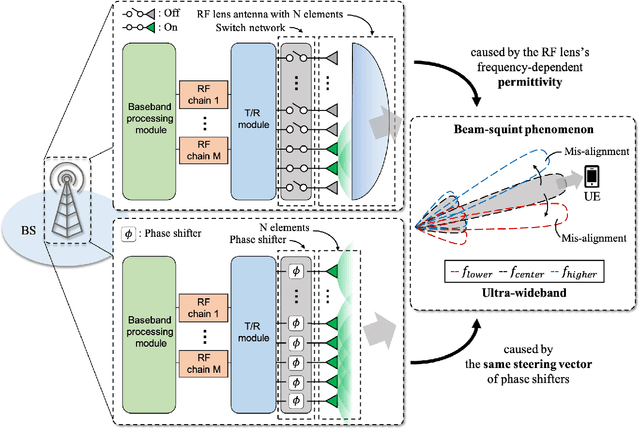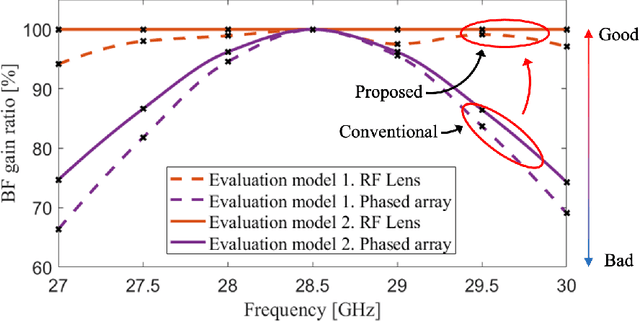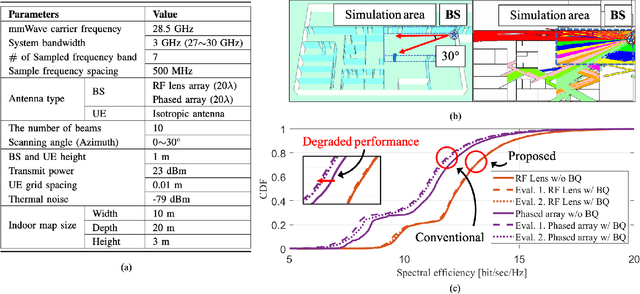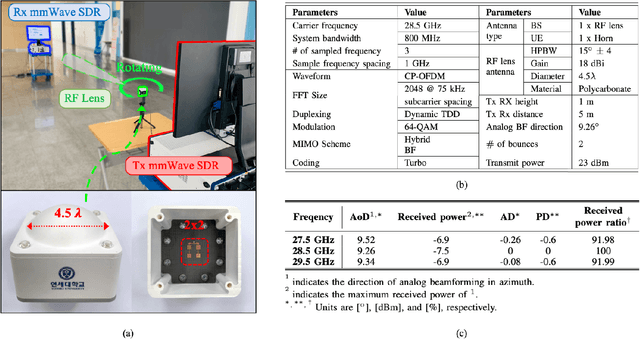Beam Squint in Ultra-wideband mmWave Systems: RF Lens Array vs. Phase-Shifter-Based Array
Paper and Code
Dec 08, 2021



In this article, we discuss the potential of radio frequency (RF) lens for ultra-wideband millimeter-wave (mmWave) systems. In terms of the beam squint, we compare the proposed RF lens antenna with the phase shifter-based array for hybrid beamforming. To reduce the complexities for fully digital beamforming, researchers have come up with RF lens-based hybrid beamforming. The use of mmWave systems, however, causes an increase in bandwidth, which gives rise to the beam squint phenomenon. We first find the causative factors for beam squint in the dielectric RF lens antenna. Based on the beamforming gain at each frequency, we verify that, in a specific situation, RF lens can be free of the beam squint effect. We use 3D electromagnetic analysis software to numerically interpret the beam squint of each antenna type. Based on the results, we present the degraded spectral efficiency by system-level simulations with 3D indoor ray tracing. Finally, to verify our analysis, we fabricate an actual RF lens antenna and demonstrate the real performance using a mmWave, NI PXIe, software-defined radio system.
 Add to Chrome
Add to Chrome Add to Firefox
Add to Firefox Add to Edge
Add to Edge